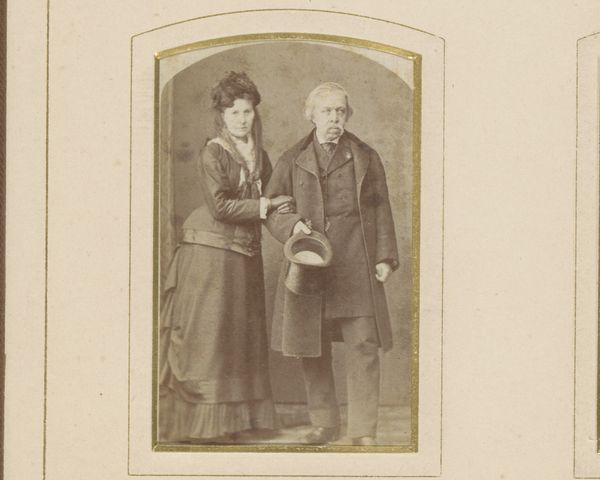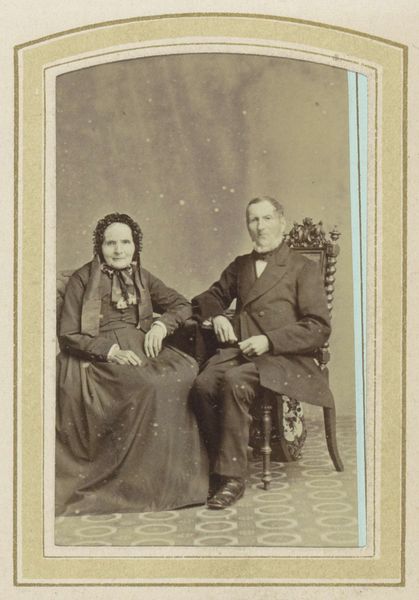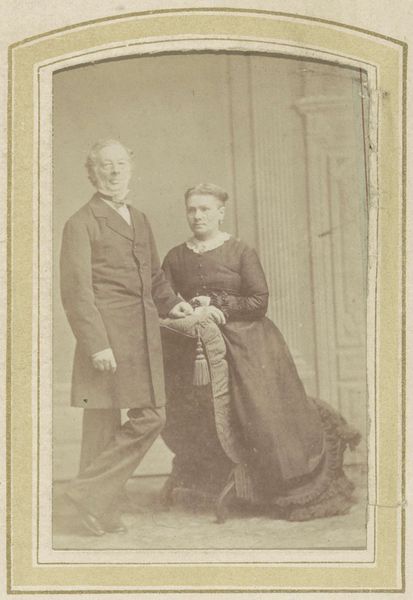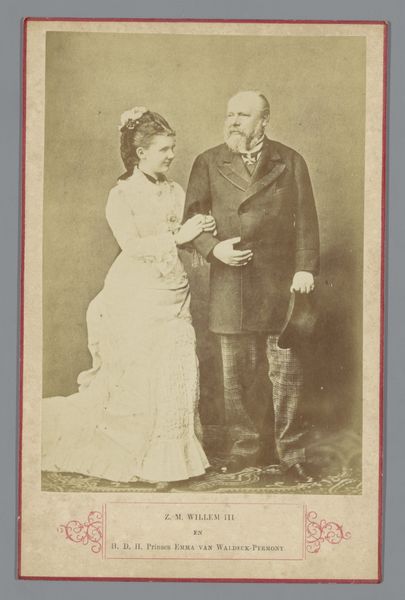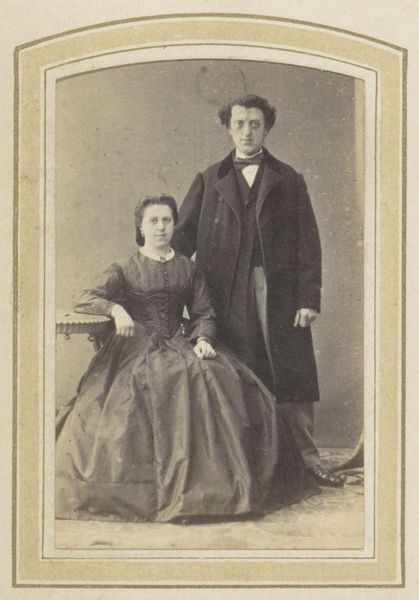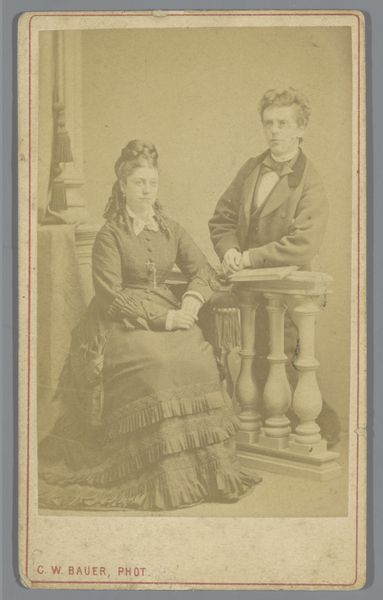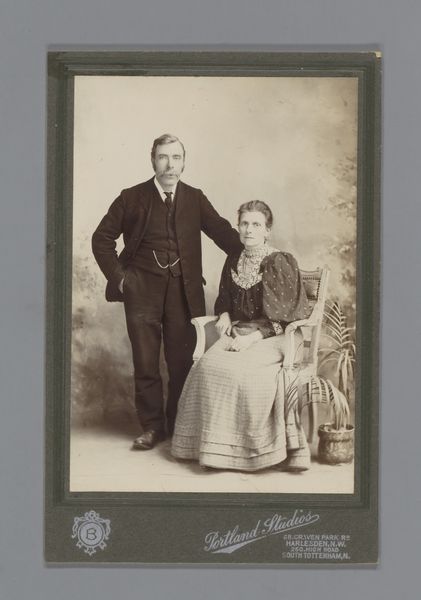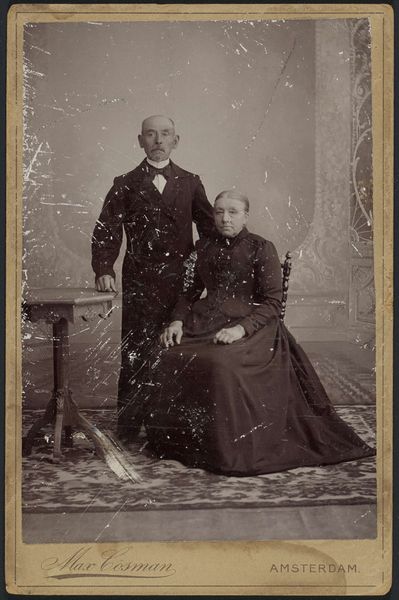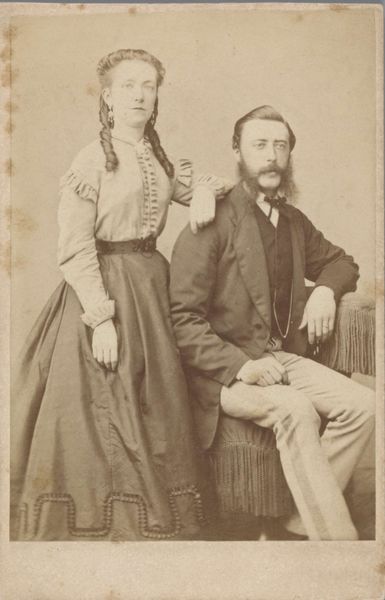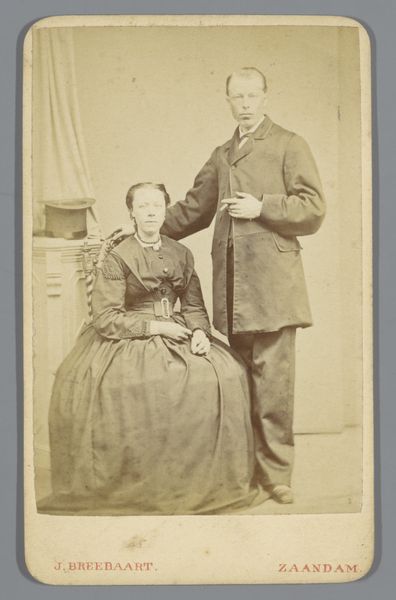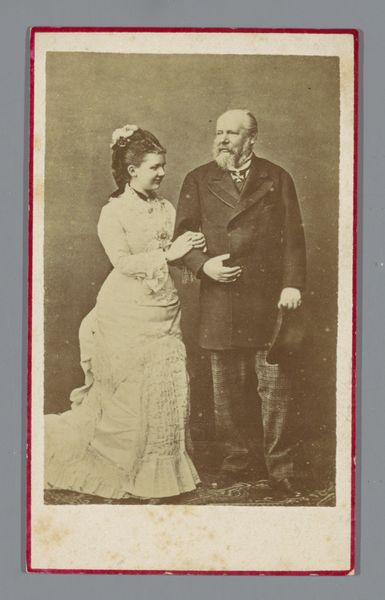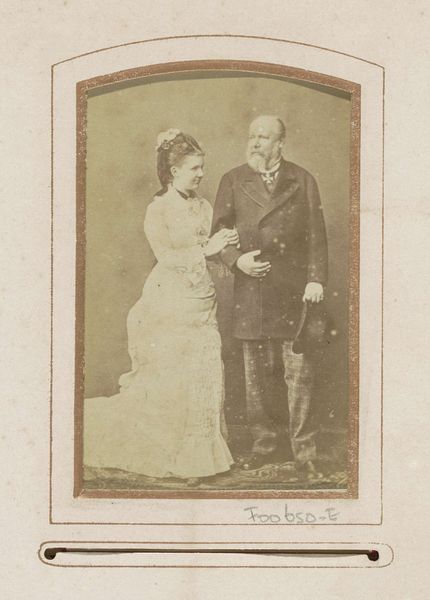
photography, gelatin-silver-print
#
portrait
#
photography
#
historical photography
#
group-portraits
#
gelatin-silver-print
#
19th century
Dimensions: height 94 mm, width 53 mm, height 105 mm, width 63 mm
Copyright: Rijks Museum: Open Domain
Editor: So, here we have Jacques Chits’ “Portrait of a Woman in a Dress and a Seated Man,” taken sometime between 1876 and 1887, a gelatin-silver print. The image is striking, but it is unclear, aged; there’s a palpable sense of formality, of distance, between the subjects and the viewer. How do you interpret this work, considering its historical context? Curator: This photograph encapsulates the complex power dynamics inherent in 19th-century portraiture. It's crucial to ask: who is being represented, and for whom? The very act of sitting for a portrait was a privilege, primarily afforded to the upper classes. How does the woman's posture, standing as opposed to sitting, contribute to a possible narrative around gender? What does the gaze, or lack thereof, tell us about their status? Editor: That’s a good point. She is standing while he’s sitting… She appears almost staged, an element within the man's carefully curated life. Curator: Exactly. And thinking through a contemporary lens, how can we use our present understanding of gender roles, power, and visibility to unravel the story of this piece? Consider, for instance, that portraiture has historically been dominated by male artists and subjects. Whose narrative is being prioritized here, and how does this image reflect or resist the conventions of its time? Editor: It makes me wonder about agency – who controlled the narrative here, and what does that say about their relationship? Maybe they saw this as empowering themselves? Curator: Precisely! Photography, in its early days, also offered a new form of self-representation for people of color and other underrepresented groups to show themselves outside the parameters set by the powerful, even as the studio remained an exploitative business in many ways. Ultimately, these are important stories that we, as viewers, must uncover. Editor: It really changes my understanding of the image by placing it in this social framework. I guess the true value lies not just in what the art presents, but also in the stories it indirectly narrates and the conversations it ignites. Curator: Exactly, and it’s also vital to look into what has been missed from the art historical record. It asks us to remain critically conscious, and aware of the narratives we tell ourselves about the past and the present.
Comments
No comments
Be the first to comment and join the conversation on the ultimate creative platform.
